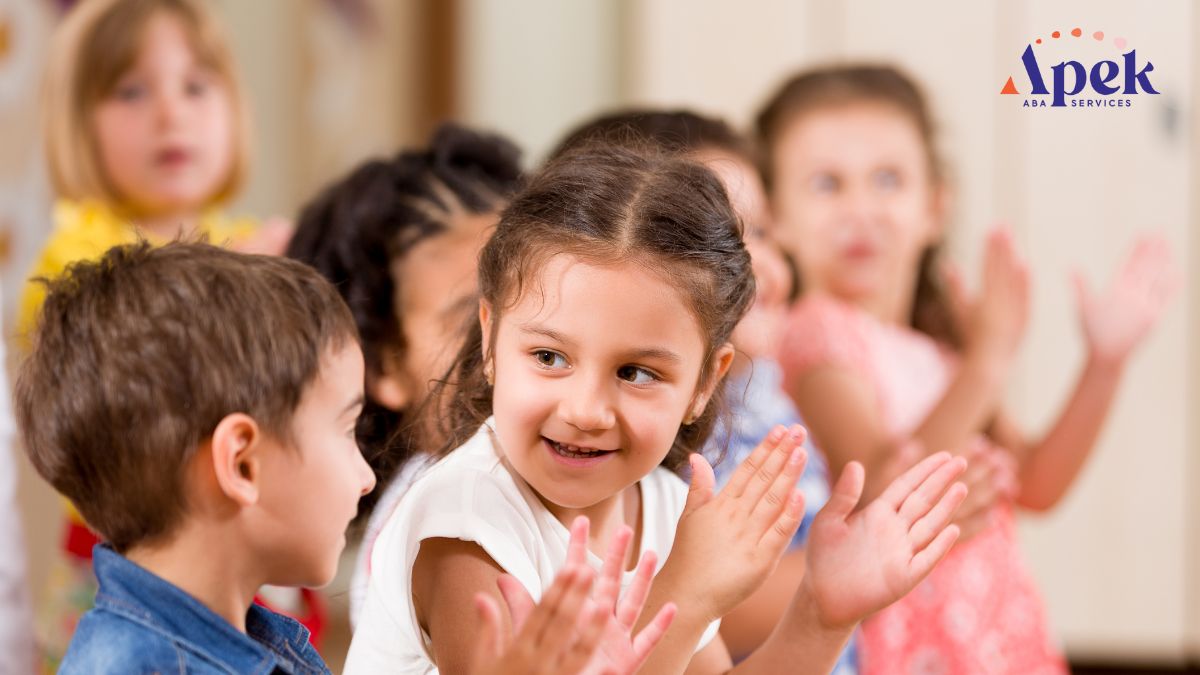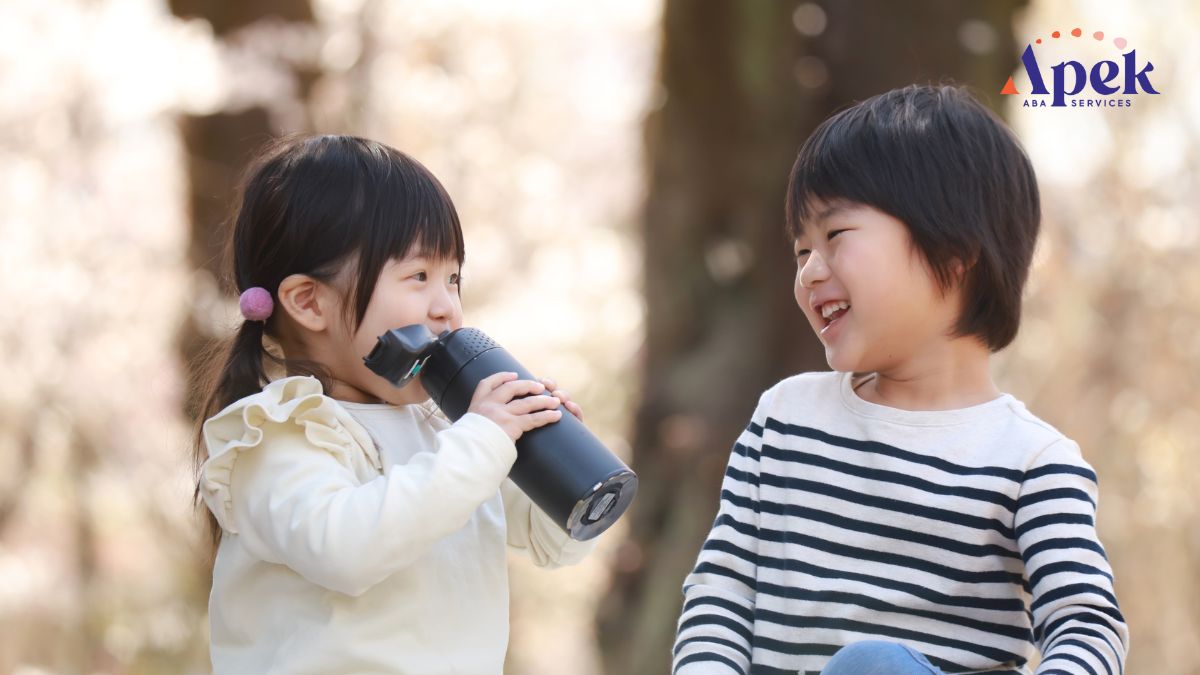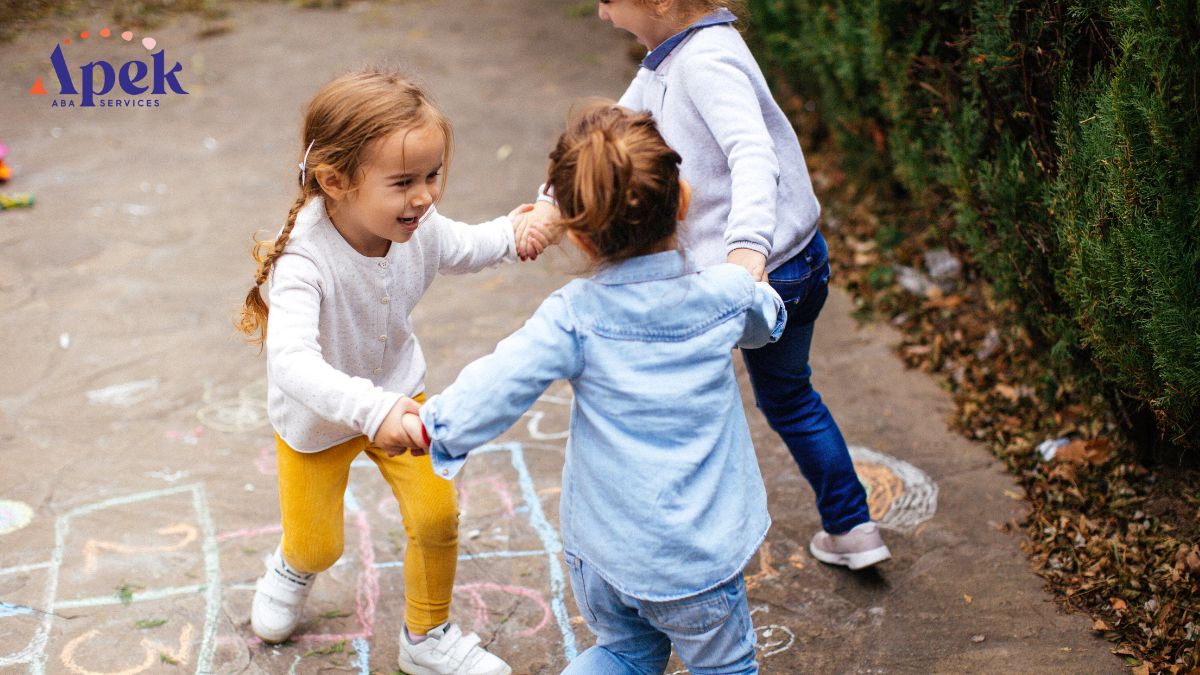Key Points:
- ABA therapy improves social skills by teaching children with autism to start conversations, read body language, join groups, and manage conflicts.
- Structured lessons, reinforcement, and generalization help skills transfer from therapy to daily life.
- Parent involvement and peer practice further boost confidence and connection across settings.
When a parent or caregiver types “ABA therapy social skills” or “social skills autism therapy” into a search bar, often the worry is this: “How can ABA help my child connect with others?” Many children with autism struggle with social cues, making friends, or sustaining conversation.
For families, it’s painful to watch a child be left out or misunderstood. The good news is that ABA (Applied Behavior Analysis) offers tools and strategies that can lead to meaningful improvement in social skills.
Social Skills Gaps in Autism: What Parents See, What ABA Targets
Social skills autism challenges often appear as missed cues, one-sided conversation, or trouble joining group activities. Many children also find unspoken rules hard to read, which can lead to isolation at school or during community events.
ABA therapy social skills work zeroes in on these day-to-day barriers and turns them into teachable behaviors. Social skills ABA programming starts with assessment. To build social confidence through competence, therapists increase opportunities for positive contact with peers.
Common social targets in ABA social skills work include:
- Initiating and maintaining conversations with peers.
- Reading body language and facial expressions during play.
- Joining groups, asking to play, and handling “no” without a meltdown.
- Turn taking, sharing, and negotiating during games.
- Repairing communication when a message is unclear, such as asking for clarification.
- Managing common conflicts with short scripts and calm problem-solving steps.
Core ABA Methods That Move Social Skills Forward
Parents often ask how social skills training ABA differs from general social coaching. ABA methods make the difference through careful sequencing, reinforcement, and generalization planning. The approach identifies a skill gap, teaches the missing behavior in simple steps, and reinforces the new behavior every time it appears.
Structure keeps teaching efficient, and data show when to adjust:
- Therapists choose strategies that match the child’s age and profile. Younger children may respond well to naturalistic developmental behavioral interventions that teach through play. Older children and teens may benefit from structured groups like PEERS, which include direct instruction, role-play, and homework with social coaches at home.
- Teams plan for generalization from the start. A greeting learned at the table needs to work at recess, in the hallway, and during community sports. Therapists work with families and schools to place supports where the child will need them, such as a small visual on a binder or a short script on a phone note.
- Progress monitoring guides decisions. If a child can greet peers with a prompt but not spontaneously, the plan focuses on fading prompts and raising reinforcement for independent use. If a skill works with adults but not with peers, sessions shift to peer practice with brief coaching and quick wins to build momentum.
Recent trends show why scalable social skills training ABA approaches are essential across schools and communities. About 1 in 31 children (3.2%) aged eight years were identified with autism in the CDC’s latest monitoring cycle, which underscores the need for accessible training and school partnerships that reach beyond clinic walls.
Skill Areas That Change First: From Greetings to Group Work
Parents often notice early wins in skills that occur often and require short responses. Greetings, requests to play, or short back-and-forth exchanges respond quickly to direct teaching and reinforcement.
Many children also improve in joint attention, which supports shared enjoyment in activities and smoother turn taking. As social demands grow, therapy shifts to complex tasks like reading tone of voice, adjusting humor to context, and managing group projects where roles change.
The plan always begins with access. A child who never gets a chance to join a game cannot practice staying in the game. ABA social skills sessions schedule structured entry points into activities so the child experiences many successful starts.
One meta-analysis of early childhood interventions reported a small to moderate average improvement in social communication for autistic children who received developmental and behavioral programs. The meta-analytic estimate for social communication was g = 0.31 in randomized trials, which reflects a meaningful shift that families can notice in daily life.
Generalization: Making Skills Work Everywhere
Social skills matter most when they appear outside therapy. In ABA, generalization is built into the plan so children can use skills in real-life settings, not just the treatment room.
- Practice moves to lunch lines, playgrounds, art class, and community stores.
- Peers join through games and group tasks while adults fade back.
- Reinforcement follows the child into new places to prevent backsliding.
- Families turn routines into practice, like board games for turn taking or short calls for greetings.
- Visual supports at home or in backpacks help children remember steps.
Generalization works best when everyone, including therapists, peers, and families, creates chances to practice across people, places, and activities.
Parent involvement is crucial in the process. A 2024 meta-analysis found that parent-mediated play-based interventions produced a medium effect on social communication (d = 0.63) for preschool children, with additional gains in language. This aligns with ABA’s emphasis on caregiver coaching and practice during routines like meals, bath time, and play.

Group Programs and Peer Practice: When and How They Help
Structured groups help children practice friendship skills, conversation, and handling everyday social challenges. Programs like PEERS use role-plays, clear lessons, and homework with a social coach, all built on ABA principles.
- Groups use explicit instruction, practice with feedback, and real-life assignments.
- Peer-mediated sessions give natural reinforcement through play and real reactions.
- Short peer games during recess can teach more than long adult-led sessions.
- Group level should match the child’s skills, starting with one-to-one support and moving toward humor, sarcasm, and problem solving as abilities grow.
When matched well, social skills groups build connections that transfer into school, home, and community life.
Elements of effective group or peer-mediated practice:
- Clear weekly targets, such as “start and maintain a 3-turn conversation.”
- Role-plays with feedback that highlight what worked.
- Homework that repeats the same skill at home or in the community.
- Coach training for parents or caregivers to support practice between sessions.
- Opportunities to plan and host short get-togethers that build reciprocal friendships.
Choose Goals That Fit Your Child
Social skills training in ABA works best when goals fit a child’s age, interests, and daily settings. Using hobbies like art or gaming makes practice natural and motivating while creating more opportunities without extra stress. Care teams review goals every few months, adjusting based on progress.
Some children advance to humor and conflict repair, while others focus longer on turn taking and flexibility. The aim is steady growth that supports fuller participation at school and in the community.
Ways to personalize social goals:
- Map targets to the next milestone, such as joining a club or hosting a short playdate.
- Tie practice to a favorite activity so repetition feels natural.
- Pair each new skill with a plan for where it will be used this week.
- Add peer partners who share interests to increase natural reinforcement.

Frequently Asked Questions
What causes poor social skills in autism?
Poor social skills in autism come from core deficits in social communication and interaction. Children often struggle with reciprocity, nonverbal cues, and relationships. These challenges arise from atypical neurodevelopment in social brain networks, shaping daily functioning across ages, language levels, and cognitive profiles.
What is the biggest red flag for autism?
The biggest red flag for autism is a lack of response to name, pointing, or shared interests between 12 and 24 months. Limited joint attention, absence of pretend play, and not noticing others’ emotions by age two are also key. Screening at 18 and 24 months helps detect concerns early.
What is the hardest age for autism?
The hardest age for autism is often early adolescence, around 10–18 years. Puberty brings rapid biological change, shifting peer rules, and rising social demands that increase stress and anxiety. This stage also risks setbacks in mood, behavior, and independence, making targeted supports essential.
Support Your Child’s Social Growth With ABA
Social skills open doors to friendship, learning, and independence, but many children with autism need structured support to develop them. By starting ABA therapy services in Georgia and Virginia, families can give their children opportunities to practice interaction in real settings and carry those skills into everyday life.
At Apek ABA, our team builds personalized programs that target communication and social development while involving parents every step of the way. Families who commit to consistent therapy often see their children become more confident in greetings, turn-taking, and group play.
If you are ready to strengthen your child’s ability to connect and thrive, reach out today. Together, we can help your child gain meaningful social skills that last.

